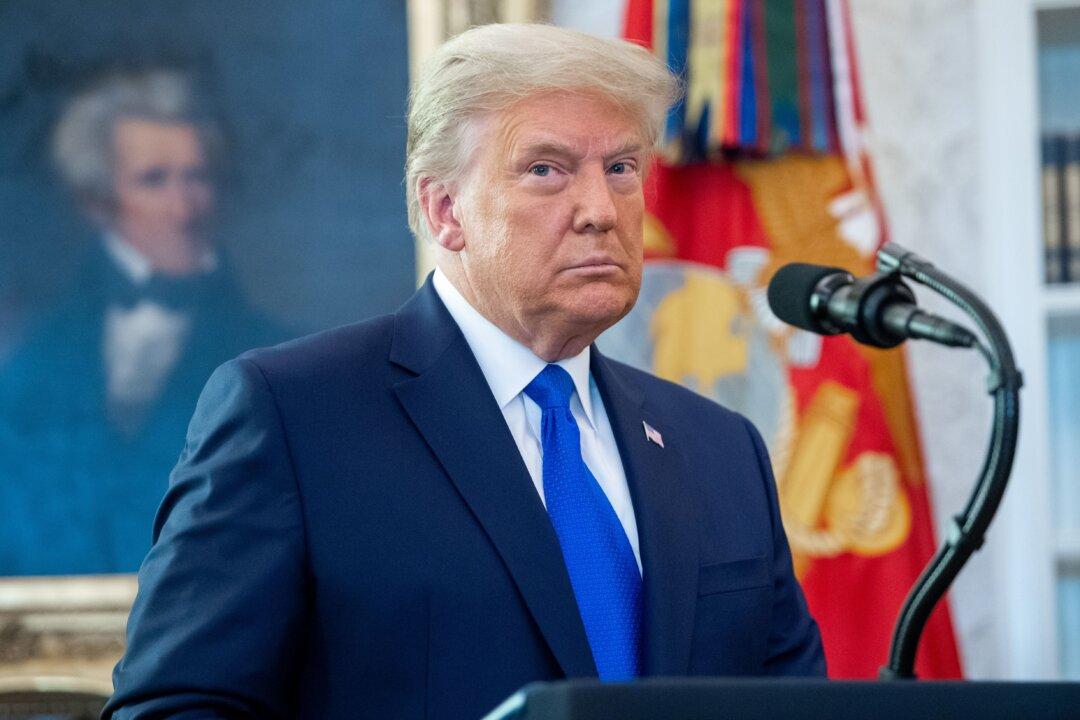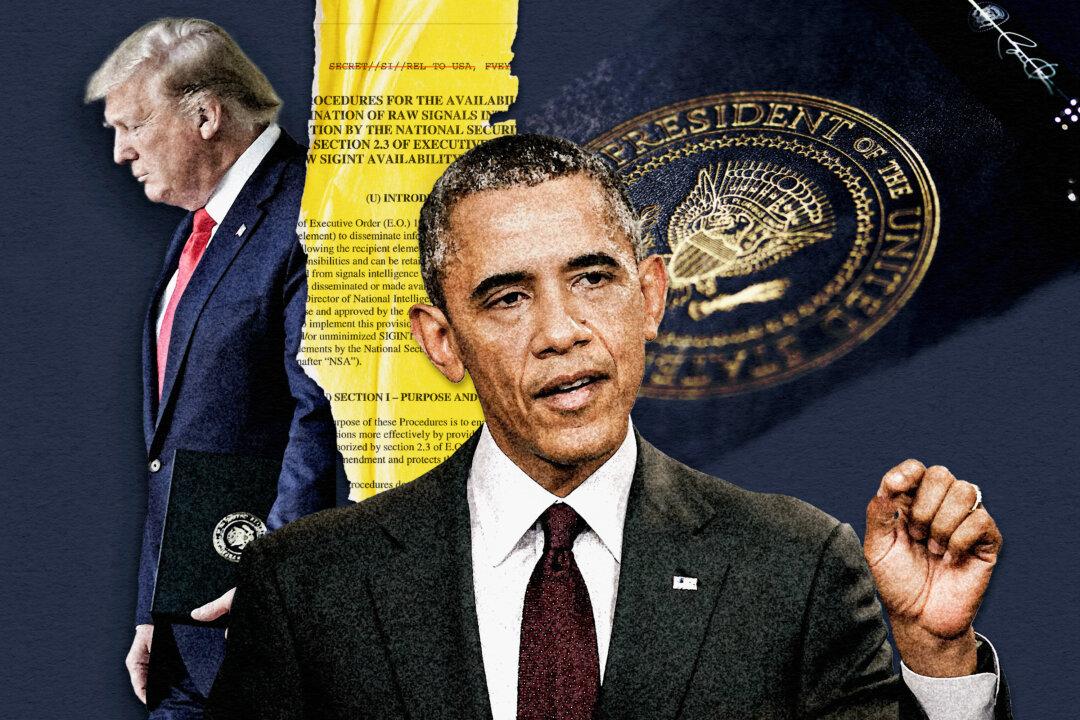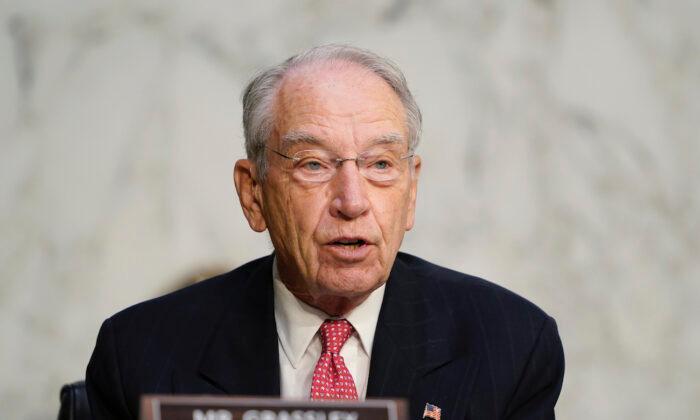Commentary
Ever since the release of FBI text messages revealing the existence of an “insurance policy,” the term has been the subject of wide speculation.
Some have said that the insurance policy was the FISA spy warrant used to monitor Trump campaign adviser Carter Page—and, by extension, other members of the Trump campaign. This interpretation is too narrow and fails to capture the underlying meaning of the text.
The Insurance Policy was the actual process of establishing the Trump–Russia collusion narrative.
The so-called Steele dossier, which was paid for by Hillary Clinton’s presidential campaign and the Democratic National Committee, served as the foundation for the Russia narrative.
The intelligence community, led by CIA Director John Brennan and Director of National Intelligence James Clapper, used the Dossier as a launching pad for creating their Intelligence Community Assessment.
This report, which was presented to Obama in December 2016, despite NSA Director Mike Rogers having only moderate confidence in the assessment, became one of the core pieces of the narrative that Russia interfered with the 2016 elections.
Through intelligence community leaks, and in collusion with willing reporters, the narrative that Russia helped Trump win the elections was aggressively pushed throughout 2017.
However, with the declassification order given by President Donald Trump last Monday, we are expected to learn significantly more about the creation of the Insurance Policy soon.
“A lot of people think the Insurance Policy was getting a FISA warrant on Carter Page,“ Chairman of the House Intelligence Committee Devin Nunes (R-Calif.) told Fox News’ Laura Ingraham in a Sept. 17 interview. ”We actually believe it was more explicit than that.”
“We believe it was actually that the Insurance Policy was specifically what they did that still is redacted that the President has said that he’s going to declassify,” he said.
Was Papadopoulos the Target of a FISA Warrant?
I have long thought it is probable that media reports in the BBC and The Guardian of two failed FISA application attempts made in June and July 2016 were accurate.Sen. Chuck Grassley (R-Iowa) adds credibility to the idea that there were FISA applications in the summer of 2016, as evidenced by information he requested regarding those potential applications in a June 28, 2017 letter:
Media reports along with the FISC’s 2016 annual report provide reason to believe that, in the course of these investigations, the FBI and Justice Department submitted proposed FISA applications that the FISC preliminarily evaluated and stated it would reject. The FBI and Justice Department would then modify and resubmit them.
“The 2016 FISC Report … states that in 2016 the FISC denied nine applications or certifications, and denied in part or modified 365 orders.”
I’ve also thought those FISA applications may have targeted Trump campaign adviser George Papadopoulos, who became the subject of a series of unusual encounters in early 2016
This would explain why there is no mention of Papadopoulos anywhere in the Steele Dossier, unlike Carter Page, Trump campaign manager Paul Manafort, personal lawyer Michael Cohen, former National Security Advisor Gen. Michael Flynn and campaign manager Corey Lewandowski, who are all listed in the Steele Dossier.
This also explains why the FBI didn’t bother to interview Papadopoulos until Jan. 27, 2017.
Carter Page Surveillance
We know for a fact that Trump campaign adviser Carter Page was targeted in a FISA application.Page was not an agent of a foreign power—he was simply a convenient FISA warrant target.
The segments specified for redaction by the President within the June 2017 FISA renewal on Carter Page are pages 10-12 and 17-34. Page 10 begins on page 301 of the combined FISA documents. The assertion is made that the FBI believes the Russian Government’s efforts to influence the 2016 presidential election were being coordinated with Page.
Page, who has resolutely denied these claims, continues to remain a free man and has had no charges filed against him.
It’s almost certain that whatever redacted reasoning was used by the FBI in making their assertions will appear obviously false in light of current information.
Additionally, this redacted section may highlight Page’s assistance in the Evgeny Buryakov Case—a case in which Page provided assistance to the FBI—in a fashion that is somewhat less than forthcoming.
The second set of redacted pages continues to refer to Page, but the focus shifts to the Steele Dossier along with the use of circular reporting.
It’s entirely possible other sources will be revealed. Sources such as scholar Stefan Halper, who was used by the FBI as a planted spy. Halper’s contact with Page began on July 11, 2016, just four days after Page’s July 2016 Moscow trip.
Halper stayed in contact with Page for the next fourteen months. Halper’s interactions with Page abruptly ended exactly as the final FISA Warrant on Page expired.
Should Halper’s name not appear in the unredacted pages of the FISA renewal, he will certainly be present in the underlying “FBI reports of interviews prepared in connection with all Carter Page FISA applications,” which were also ordered for declassification by Trump.
Nunes has repeatedly noted the exclusion of exculpatory information regarding Page. This probably relates to Page’s role in the Buryakov Case. We will likely see that the information put forth is only a partial representation of what the FBI actually knew.
A document not on the presidential declassification list that should be is Carter Page’s March 2, 2016, FBI Interview. This interview took place when Page was meeting with attorneys at the Southern District of New York on the Buryakov Case. It likely presents Page in a different light than the manner in which the FBI presented Page to the FISA Court.
One other important point to bear in mind. The FISA cited for declassification is the third and final renewal from June 2017. The information put forth will likely prove to be a repetitious rehash of misinformation the FBI repeatedly presented before the FISA Court for nine months—despite knowing that much of it was materially inaccurate, comprised of oppositional research, and funded by the DNC and Clinton campaign.
Secrecy
There are many reasons why the Intelligence Community doesn’t want the redactions made public—and why they are so protective of “Sources & Methods.”The Steele Dossier will be shown as the primary evidence used throughout the FISA. It was the “Source” despite its near-exclusive reliance on unverified second- and third-hand accounts. The “Methods” used to establish the Russia narrative will be made apparent.
We are already seeing reports that the FBI & DOJ are reluctant to completely remove all redactions as ordered. A submission of initial documents will almost certainly contain “proposed redactions” on the part of the agencies.
Although this effort will ultimately fail, it should come as no great surprise. Exposure of the Insurance Policy, along with its “Sources and Methods,” is something the FBI has been desperate to avoid.
Views expressed in this article are opinions of the author and do not necessarily reflect the views of The Epoch Times.






